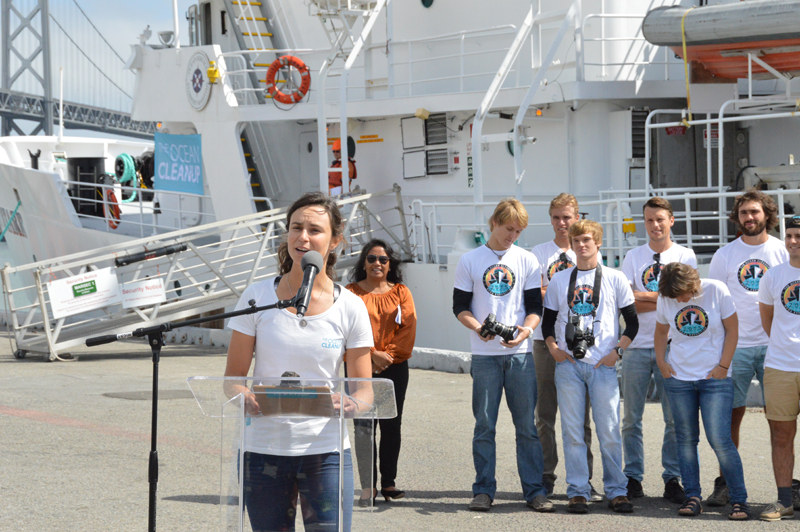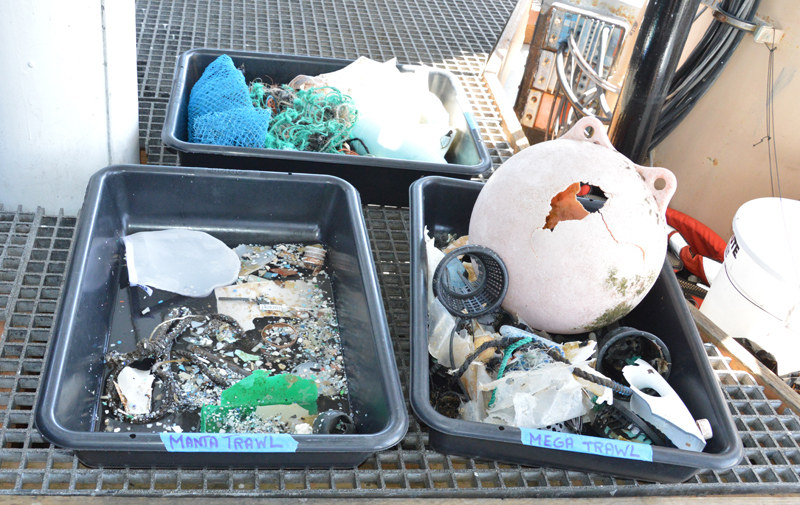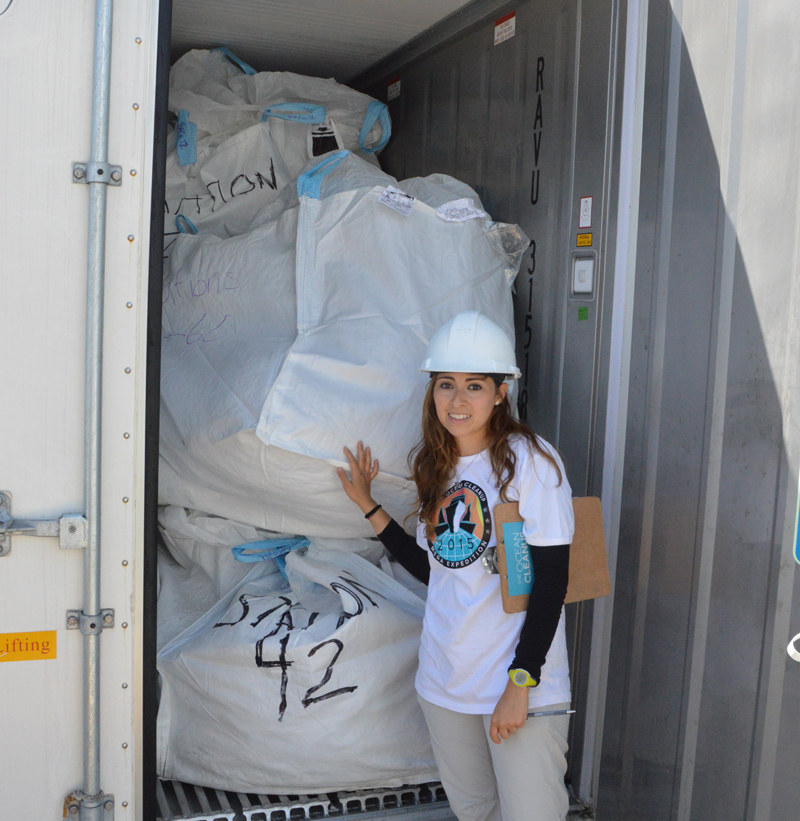
Racers-Turned-Researchers Return

©Latitude 38 Media, LLC
The first of two dozen Transpac race boats that had been recruited to do ocean research returned to the Bay last week, carrying with them samples of degrading plastic debris collected in the massive Pacific Garbage Patch. The effort, called The Mega Expedition, will give researchers a more comprehensive ‘map’ of Eastern Pacific pollution than has ever before been created. The Expedition’s parent project, The Ocean Cleanup, aims to rid the Patch of at least half of its garbage within 10 years of deploying a purpose-built collection device in 2020.
Mainstream interest in the project, both locally and internationally, was evident at a press conference Sunday, attended by all Bay Area network television affiliates, radio and print reporters, and foreign journalists. The focal point was the arrival of the project’s flagship, the 171-ft research vessel Ocean Starr, as well as the Rogers 46 Varuna and the TP52 Patches. As reported earlier, the Cleanup’s concept was envisioned by then-teenager Boyan Slat of The Netherlands (now 21), who has earned accolades from scientific organizations as well as the UN. The project is now supported by many international scientists and volunteers, and has secured substantial funding from Marc Benioff, CEO of San Francisco-based Salesforce, the Bill and Melinda Gates Foundation, and the Dutch government, in addition to more than $2 million through crowd-sourced funding.

©Latitude 38 Media, LLC
The Mega Expedition involved widespread deployment of collection devices called manta trawls (from the Transpac race boats) and mega trawls (from the Ocean Starr), which were towed for predetermined lengths of time along specific latitudes. The collected samples are now being shipped to The Netherlands for analysis, which will reveal the best location to place the collection device that Slat invented. It is comprised of a sixty-mile-long system of "booms" that will funnel trash and particulate matter to the apex of the “V”, where it will be stored in a silo for eventual removal by barge. The first prototype of the trash-collecting device will be deployed off Japan next year.
"The vast majority of the plastic in the Garbage Patch is currently locked up in large pieces of debris," explains Slat, "but UV light is breaking it down into much more dangerous microplastics, vastly increasing the amount of microplastics over the next few decades if we don’t clean it up. It really is a ticking time bomb."

©Latitude 38 Media, LLC
We encourage you to check out the project’s website, and look for more on this effort, including perspectives from returning Transpac "research" vessels, in the October issue of Latitude 38.
